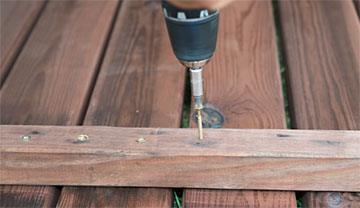Moving your outdoor belongings

You’ve boxed up the kitchen, the living room, the bedrooms, and the basement. Now it’s time to tackle the outdoor rooms – the patio, balcony, porch, and yard. Here are some tips to help when packing and moving those items that are (meant to be) built to withstand the elements.
1. Clean up before you pack up
If furniture has a permanent place outside, it’s bound to collect dirt, dust, and other debris. Clean off the collected grime so it doesn’t transfer to your other belongings during the move.
Wipe down all your patio and lawn furniture, hose down items that won’t rust, and dry anything wet from rain or snow. If you are taking your garbage cans, give them a thorough wash before transporting them with your valuable indoor furniture.
2. Check for unwanted stowaways
While you’re cleaning everything, check nooks and crannies and other hiding spots for critters of the crawly kind. Your outdoor furniture can make convenient shelters for spiders, wasps, and various insects. Depending on where you live, you may also find that your possessions have become homes for animals like snakes, skunks, and raccoons. Take care when looking, but do double check there aren’t any unwanted guests joining you on the trip to your new abode.
3. Pack it properly
When packing and moving your patio chairs and tables, remove all cushions and pad sharp edges and hard parts. If there are removable fragile components, take them off frames and wrap well.
Secure any loose tools, parts, and accessories from other outdoor items in small containers or sealed plastic bags attached to larger components.
Safely dispose of hazardous items, such as pesticides, paint tins, and oil. Drain the gas from your lawn mower, chainsaw, leaf blower and hedge trimmer, so there are no leaks during the move. Remove your propane gas bottle from the BBQ as it’s dangerous to transport, even if it’s empty.

4. Make a plan for your plants
Moving can take a toll on your delicate plants. Extreme temperatures, too much or too little water, and unstable travel conditions may make it tough for them to survive the transition to a new home.
There are ways to prepare your plants for the move. Cover branches with paper sleeves or plastic sheets (with slits) to protect from breaks or loss of foliage, or pack them in lined boxes with holes for ventilation. If branches need to be tied for the trip, be sure to secure them gently in the direction the plant is growing. Uncover the plants as soon as possible when you arrive at your new destination.
Cover pots in plastic to stop water and soil from seeping out. If possible, transfer plants in plastic pots and carefully pack and wrap ceramic items and pottery separately.
5. It’s a family affair
Don’t let moving day end in tears when the kids realize their favorite toys have been left miles behind or can’t be reassembled. Dismantle swing sets, playhouses, and other bulky toys, being careful to pack small parts and screws in tightly sealed containers or bags. Secure these containers to larger parts of these items. Empty out sand, water, paint and other messy materials from play furniture, and clean out any residue.
While you’re at it, don’t forget the furry family members! If it’s viable to transport your pet’s beds, houses or habitats, check that they make the trip to your new home. Or you could be the one who ends up in the doghouse.
6. Check for spiders and other creepy crawlies
Seriously…keep those hiding spots clean!

